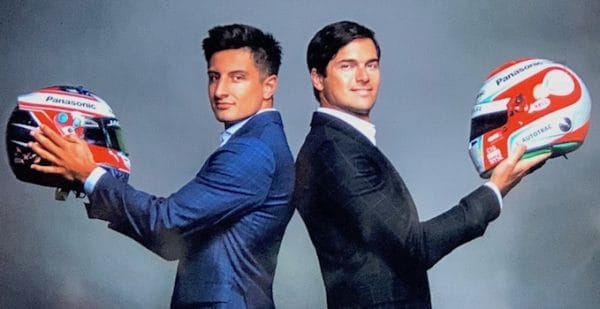How Electric Cars Will Become a Reality for Us All: Through Formula E Racing

It’s through challenges that we grow strong. Formula E is the taskmaster of the auto industry and Jaguar is taking lessons.
It’ll be quiet in Brooklyn this weekend. As in, not loud, despite hosting the final race in a global series featuring dozens of race cars and cheering crowds. That’s because the race is Formula E, the electric Grand Prix race that finishes the 2018 series this weekend.
Formula E, for the uninitiated, is an amazing thing. It was the brainchild of Jean Todt, president of the Federation International de l’Automobile, or FIA, the governing body of international sport racing which is also very invested in road safety and sustainability. Todt and FIA realized that by creating a competition of electric cars they would be able to drive a whole new industry forward.
How Electric Racing Innovates for the Rest of Us
Just staging an all-electric race wasn’t enough for FIA. The competition had to drive the industry forward and result in innovation. So, competitors must compete with a very stringent set of rules. Essentially, they are only allowed to control a few things on their cars, such as the driver and some of the motor and software design, while other factors are standard to all competitors, including the car’s body, its batteries and tires which are provided by Michelin.
This forces competitors to tinker to gain an edge. And once they achieve the car they want to compete with they can’t change it; they have to stick with the their decisions throughout the series, which starts in Hong Kong in December and moves around the globe finishing in New York in July.
Further reading: The Jaguar F Pace, the iPace’s inspiration

Formula E takes to the streets of Brooklyn, NY. Photo: Formula E
A World Class Challenge for World Class Car Brands
Four years after the first race in Beijing in 2014, Formula E has become a major focus for every performance car brand. Jaguar and Audi have taken major stakes, as has BMW, which is holding up Formula E as the center of electric development innovation lab. Other competitors include teams from French luxury brand DS partnered with Virgin, and teams from Andretti Autosport and Dragon Racing.
Jaguar is among the first to bring its work on Formula E to market and this year introduced its iPace all-electric crossover. “Through racing we are learning all the time” said James Barclay, Jaguar’s director of Formula E. “Our mission is race to innovate and to make the best use of resources to inspire the next generation of car owners,” he told us. By competing and learning, they can do this.
By next year, James told us, they expect to have a car that can run an entire Formula E race on a single battery; this is a huge development. Right now even the race car batteries won’t last an entire race, so drivers change cars during the race. And that battery technology will trickle down to the consumer car market. On the horizon are car batteries that can take a car 500 miles, much better than the current standard of 100 miles.
Jaguar is also starting its own racing series, the iPace eTrophy series, in which competitors will race iPace models adapted from the company’s Formula E cars. Contestants can compete for a £200,000 rights fee and an annual £450,000 entry fee, though there are cash prizes and bragging rights. The series will take place on five continents starting this December in tandem with season 5 of Formula E.
Further reading: How Michelin is innovating the future of tires

Panasonic Jaguar Formula E drivers Mitch Evans (left) and Nelson Piquet Jr. (right). Photo: Jaguar
Jaguar’s Innovation Strategy Includes Gorillaz
Yes, you read that right. We were scratching our heads, too when we heard that the proper British car maker teamed with this edgy techno band whose members are cartoons. But wanting to inspire kids to study science and tech, Jaguar teamed with Gorillaz to develop a code-breaking challenge app to recruit students into engineering. Winners have the opportunity at a job at Jaguar Land Rover, and so far more than a few have been hired.
To take this partnership up the leadership chain must have been a challenge. But as we know, and as FormulaE is proving, it’s through these challenges that we grow.
